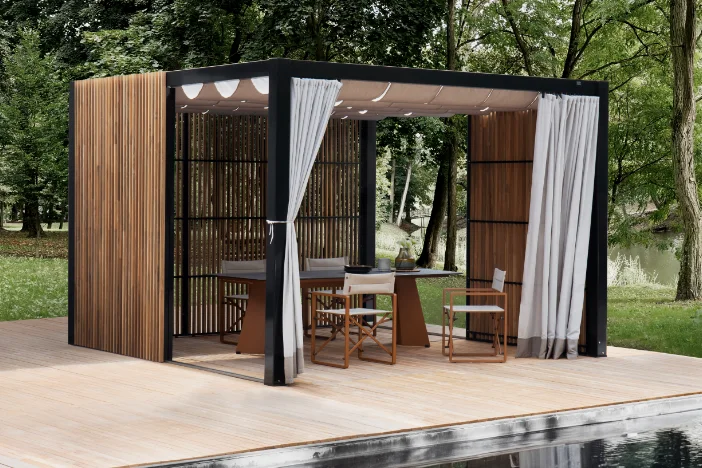
Shade and shelter are important outdoor features
The National Institutes of Health (NIH) recommends you get anywhere between 10 to 20 mcg of vitamin D per day, depending on your age. For people who love the outdoors, this might sound like good news; after all, one of the main ways you can get this vitamin is through the sun’s rays.
But as anyone who’s stayed out for too long knows, baking under this brutally hot star can burn your skin and give you sunstroke, even if you slather on sunscreen. This makes outdoor shade necessary, as you’ll have a safe haven to go to.
In this guide, we’ll have an in-depth discussion about your choices for an outdoor shade structure. This includes pros and cons, so you’ll discover what’s best for your backyard.
Increase home value with an outdoor shade structure
In addition to providing health benefits, spending time outdoors in your backyard allows you to enhance your home’s resale value. Sure, you could throw a couple of lawn chairs on the grass and call it a day. However, adding more permanent outdoor features would increase the value of your home to potential buyers. A remodeling impact report by the National Association of Realtors (NAR) showed that a new deck, patio or outdoor kitchen provides an 89-100% return on investment. Shade, shelter and privacy all factor in the performance of these additions and can increase the incremental value even more.
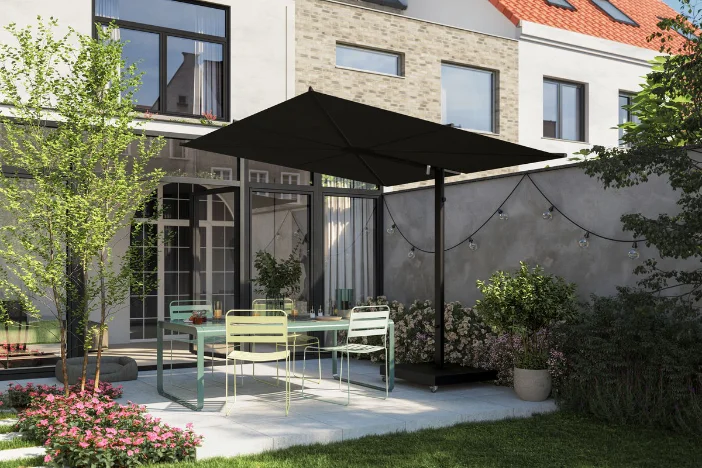
Easy temporary shade options
The easiest way to shade and protect a new outdoor living space is to add mobile, removable or as-needed solutions. They’re relatively inexpensive and make sense for small to medium-sized spaces but are not areas with flames (e.g. fire pits, fireplaces, barbecues or stoves). Some common options include:
- Patio umbrellas (market and cantilever)
- Shade sails
- Retractable awnings
Helpful Article
We suggest reading our Patio Umbrella Buying Guide for in-depth information on market and cantilever umbrellas.
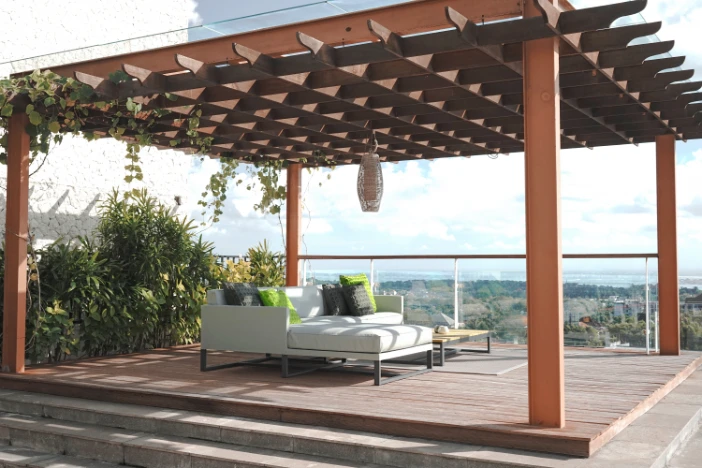
Permanent shading structures
More substantial shade solutions are typically permanent installations or at least less portable than umbrellas and the like. They’re well-suited for larger outdoor settings or when privacy is a priority, but come with a higher price tag. Although they’re closely related and often possess similar traits when customized, the most popular shade structures include:
- Gazebos
- Pergolas
- Cabanas
- Pavilions
- Canopies
- Arbors
Guide Sections
A quick comparison of sunshade structures
We go into greater detail about each major shade structure in our guide but below is a quick reference of a few of their pros and cons.
| Structure | Key Benefits | Main Drawbacks |
|---|---|---|
| Gazebos | All seasons protection | Costly & high-maintenance |
| Pergolas | Attractive & low-maintenance | No rain protection & may attract bugs |
| Cabanas | Privacy & customizable | Expensive & can be stuffy |
| Pavilions | Multi-purpose | Large size limits placement |
| Canopies | Many sizes & configurable | Limited wind protection |
| Arbors | Affordable & easy installation | More decorative than functional |
Learn about different shade structures
Get a better understanding of the various outdoor structures that you can install or build by reading through the sections of this guide. Once you’re armed with this knowledge, you can make an educated decision on which shade solution is right for your space and budget.

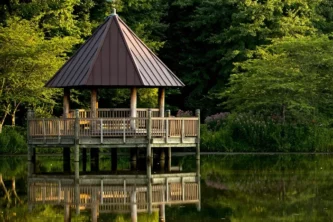
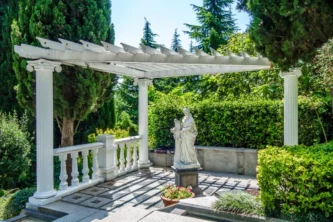
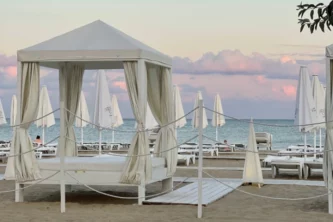
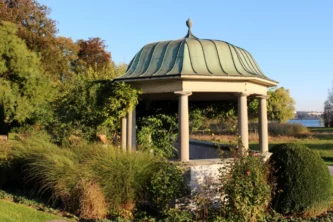
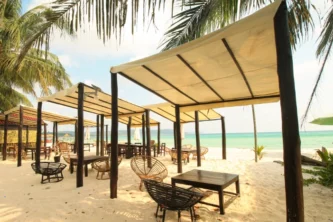
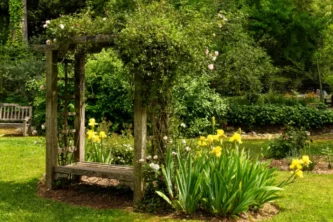




Leave a Reply